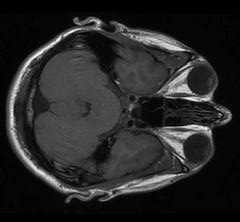Animal ALS?
The scientific method would mandate an investigation of what ways animals do or do not get ALS. The differences, or similarities, help us build our theory about the disease. Genetically engineering a SOD-1 mutation into mice is not impressive to me, in terms of ALS research.
I checked the index of my 1998, first-edition copy of Mitsumoto's book on ALS. Chapter 17, pages 285 to 299, says that naturally occurring models are mice, dogs, and horses. The authors point out that the apparent similarity to human ALS could be false, and that at least in the case of the Wobbler mouse, it's clearly not ALS. The canine model (HCSMA) is inherited, and features other dissimilarities which (in my view) make it nonequivalent to ALS. The equine model, in horses, appears to be the closest animal model of ALS, as the symptoms are similar to those in humans, and it is non-inherited. In 1998, they said this model has been only recently identified.
But, the authors state, "No naturally-occurring model of MND is entirely adequate as a model for ALS."
Humans have been observing primates both in the wild an in captivity for long enough and in great enough quantity that I suspect that someone would have by now noticed primate ALS.
And as Hopeseeker on braintalk ALS points out:
For instance all cattle in the U.S. (and would think the UK is even more stringent) are supposed to be monitored for signs suggesting Mad Cow. Any cows identified as possibly having this could be checked for MND if they do not have Mad Cow. These are generally "downer" cows with clear impairments of some kind, so if they turn out not to have Mad cow, perhaps MND may be the cause of some of their problems. Older cows and pets should be more likely to show signs of MND.
My two-minute hunch is that animals do not naturally get sporadic ALS, only humans do. Therefore the theory about human ALS is mistaken; It's not a function of motor neurons per se (e.g. length, metabolic work load, etc.), otherwise we would have seen it in the billions of well-loved domestic animals that have lived with us over the centuries (e.g. horses and dogs).
It's not a function of absolute age, either, since Lou Gehrig was pretty young when he got it, and I was only 41 when diagnosed, and there are the rare individuals who get it in their 20s and 30s.
If we're going to implicate modern toxins (which are clustered in time and space toward the developed world, and which would have imposed a geographic distortion on the supposedly sporadic nature of the disorder), then keep in mind that household pets (dogs and cats) are exposed to all the same toxins we are, including reality TV.
I think it's something specific to humans.


<< Home